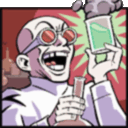Transporting unserialized firearms into NJ is the same 2nd degree crime as manufacturing - punishable by up to $150k in fines and up to 10 years in prison.
- 1 Post
- 67 Comments
I have an Urutau and it cost me about $200 in parts. It also requires buying a full AR-9 barrel or making one via ECM as there is no good way to make safe 9mm barrels using barrel liner. I also had one bolt failure and one OOB that blew up half the gun (both were build problems, not design problems), so I really don’t recommend it to inexperienced builders.
As far as NJ, 3D printed firearms are completely prohibited unless you’re licensed/registered by the state. You can’t legally print a magazine there, much less the rest of the gun. Even distributing firearms STL files is prohibited. All of which is in blatant violation of the 1st and 2nd Amendments, but they don’t care. I’m pretty sure us Arizonans aren’t even allowed into NJ any more - which is fine by me :)
Nothing that goes “bang” is frowned upon :) It all comes down to what you have the skill/funds/resources/interest to build. If you can get 380ACP ammo, my recommendation for an easy, inexpensive build is the Decker 380: https://guncadindex.com/detail/RELEASE-Decker-3.0.1:d . The gun is extremely easy to print and build (easier than most of the 22LR designs). You can get a complete build kit from 3D Print Freedom for $45, but everything except the barrel liner is ordinary hardware that you can buy from a distributor like McMaster-Carr. You can choose between top-feed and side-feed versions, and you can choose between standard semi-auto and forced-reset (what the Decker calls “recoil-assisted-reset”) trigger groups.
If 380ACP is not practical, consider the re-HD22c (from the EZHD22 Megapack: https://guncadindex.com/detail/EZHD22-megapack:1). It’s a relatively easy AR15-style 22LR design. You’ll have to buy barrel liner and hammer and trigger springs – everything else is hardware store line-stock or printable. Build instructions (and printed parts) are a little scattered. It makes more sense if you keep in mind that re-HD22c is a “reinforced” version of the HD22c, which is a “compact” version of the HD22, which is an improved version of the EZ22.
Different brands have different specs. Siraya Tech documents theirs here: https://siraya.tech/blogs/news/guide-to-annealing-siraya-tech-pet-cf-enhancing-performance-through-heat-treatment
Polymaker has instructions in the “notes” at the end of the Technical Data Sheet.
Which slicer are you using? Have you calibrated your flow rate? You might be getting some over-extrusion, which combined with 100% infill can lead to dimensional inaccuracy.
Unless you’re content using 22LR, fully DIY 3D printed self-loading handguns just aren’t currently viable. Even those in 22LR are challenging builds with questionable reliability. If you want a reliable DIY semi-auto, you’re going to have to settle for PCC/PDW platforms. Even with those, the barrel is a bit of a barrier. DIY is possible, but you’ll have to master the electro-chemical machining (ECM) process. Barrel liner builds are only realistic for 22LR due to the enormous pressures involved in center-fire handgun ammunition. But note that in the US, commercial barrels aren’t regulated. Any local gun shop will be happy to sell you one in a cash transaction with no paper trail.
That said, relying on a 3D printed firearm for personal protection is questionable at best. Unless you’re legally restricted, pick up a law enforcement trade-in 9mm handgun or a pump-action shotgun (both can be had for just a little more than the cost of a 3D2A DIY build) and call it a day. Think of 3D printed guns much as you would a “curio and relic” antique. Cool to own and maybe safe to use it at the range, but not something you bet your life on. I love my Urutau, but it’s had one OOB that destroyed half the gun and the rebuild is now on its third firing pin. Lately it’s been running good and will shoot a full mag without a failure, but I also know that the chance of something breaking or wearing out on the next shot is orders of magnitude higher than even many antiques.
Handguns in general are not the “sweet spot” of 3D2A. Consumer printers and the materials they can handle just can’t produce strong enough parts in the sizes that make sense for most handguns. So when it comes to handguns you basically have two reasonable choices:
- Any of the single-shot 22LR designs. Building one of the Harlet/Harlot/Gambino/Cabfare or their derivatives is sort of a rite of passage into 3D2A. These are complete DIY builds and will teach you good fundamentals that will help you on more advanced projects.
- A “parts kit” build where you take all the parts from a mass-produced handgun like the Glock and print your own frame. I’m personally not a fan due to the relatively high cost (cheap parts dramatically reduce reliability) and the limited knowledge/experience gained. But if you just want a range toy you can mag-dump into trash, this will get you there.
Avoid the NAG (Not-A-Glock) permanently. Avoid the NULL22 and other NAG derivatives until you have experience with a simpler full DIY build. Same for the revolver designs.
Assume your first build is just that – your first, but not your last. Keep it cheap and modest and use it as a stepping stone to reach more ambitious goals.
You need to calibrate by printing an object with known dimensions in each axis. Then measure the actual values on the printed object (you’ll need a set of calipers with better than 0.1 mm accuracy). From that you can determine scaling values. Most slicers will have at least an overall scaling value in the filament settings. Orca and its kin have separate scaling for XY and Z. You can also scale the object itself manually in the slicer, but using the filament settings is better because it will be applied automatically for everything you print using that filament profile.
Siraya Tech PPA-CF is my current “go to” for parts that need more capability than I can get from PLA+ or PCTG. Bambu PPA-CF edges out Siraya in most (maybe all) performance metrics, but for me that’s not enough to justify 2X the cost (at sale prices, 3X normally).
Annealing isn’t for strength, it’s for heat tolerance. PET-CF, for example, increases its HDT from 80 °C to around 180 °C after annealing. Nylons see a less dramatic but still significant improvement. For frames and receivers that may be a don’t care, but for suppressors it’s a big deal.

 91·12 days ago
91·12 days agoActually, what’s profitable is being anti-2A only after turning a blind eye long enough to amass a wealth of data that can be sold to train AIs to detect/block 2A content. I really wish the folks in the FOSSCAD replacement subs would realize that every post and comment they make is going to ultimately be used to improve anti-2A tools.
Any of the “engineering-grade” materials (PA6-CF, PA612-CF, PA12-CF, PPA-CF, PPS-CF, etc.) can work well for suppressors assuming:
- Your printer can handle them.
- You can properly dry the filament (drying at > 80 °C).
- You get the print settings right.
- You can properly anneal the parts (annealing dry at > 100 °C).
Technically, achieving good layer adhesion is the biggest challenge. You need a somewhat controlled environment so you don’t overcool the layers and you need a printer that can maintain extrusion temperatures of 300 °C or more with margin. Process-wise, people often try to take shortcuts on drying and annealing resulting in poor strength and lack of heat tolerance.
What you’ll get with the advanced materials is reduced baffle erosion thanks to the greatly improved heat tolerance. But it’s still fairly easy to melt one down with high-volume, high-rate fire.
Not nearly as quiet as a big can like the FTN, but I don’t have any way to quantify. It does take some of the “edge” off but it’s not hearing safe. If I had to guess, it brings the 9mm down to about the level of an unsuppressed 22LR, so probably a 10 - 15 dB reduction.
The advantage the Khrizantzema has is that it’s a flow-through design so you get a lot less backpressure than a traditional baffle can like the FTN series. On simple blowback PCCs, that beats up the gun less (you don’t get a big increase in bolt opening velocity) and puts less additional gas out the ejection port. On a bullpup like the Urutau where your nose is literally right above the ejection port, that’s a big win.

 10·14 days ago
10·14 days agoIt’s originally designed to run in the same rifle with just a barrel change so it has to be more similar than different. But shoot supers out of a <9" barrel and you will immediately know it’s not 5.56 by virtue of the fact those around you aren’t threatening to beat you with your rifle 🙂 Shoot subs suppressed and you’ll likewise know it’s not 5.56 by virtue of it actually being quiet.

 2·14 days ago
2·14 days agoAttach the stock to the dovetail. Put a nut in the recess in the stock. Put the spring and release button in place. Put the bolt through the hole by the hinge, capture the release button with it, and thread it into the nut in the stock.
There are no magic settings that work for all printers in all environments. In general, start at the top end of specified temp range, no fan, and max volumetric flow no more than half the specified max. From there it’s just standard tuning process.
Search guncadindex for “PDW chassis” and you’ll find several Glock options (e.g. https://guncadindex.com/detail/glock-pdw-chassis:1). Not likely to find much for the Hellcat since they have such a small market share compared to Glock.

 8·17 days ago
8·17 days agoGenerally, things don’t become a crime retroactively. If the making wasn’t a crime at the time, new laws can’t change that.
You may not be allowed to continue to possess things that you already made, but they aren’t going to come looking for you unless you do something to draw that attention. At that point whether you bought rails doesn’t matter. You’re either in possession of a prohibited firearm or you’re not.
Bottleneck cartridges usually need two reamers. Unlike straight-wall pistol cartridges, rifle cartridges require opening up the chamber to a much larger diameter than the bore. A rough reamer is used to aggressively remove material to get the chamber near the correct size and then a finish reamer is used lightly cut the chamber to the final dimensions. The same rough reamer is often used for both .223 Rem and 5.56 NATO (and .223 Wylde). The finish reamer will be specific to which chamber dimensions you want. Either way you will need two reamers.


No experience with the Sabre line, but I’ve not been impressed with PSA’s standard uppers. They’re functional (mostly) but not very efficient due to some pretty lax QC standards. Maybe the Sabre is a lot better, but once you’re over the $600 mark, it might be worth ponying up the extra 30% for a BCM.
Also note that if you only plan to run subs, the AGB doesn’t really add anything since you’ll very likely just run wide open all the time. The AGB really only helps if you want to run both subs and supers so you’re not completely over-gassed on the supers.